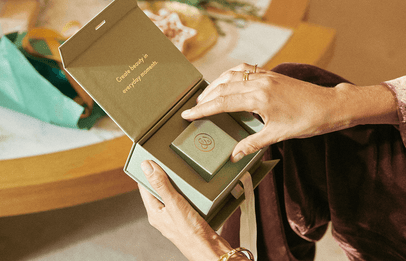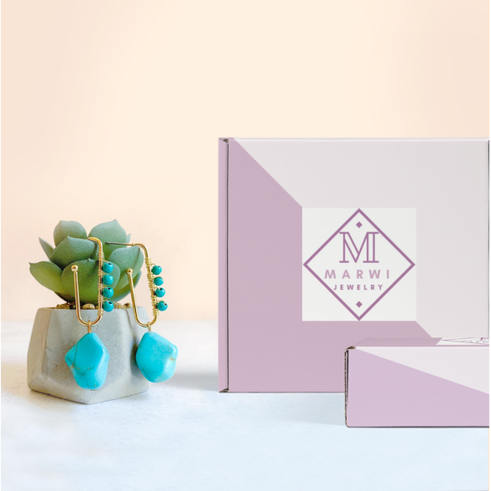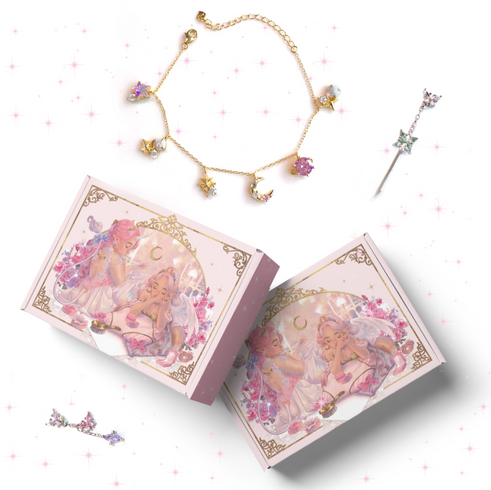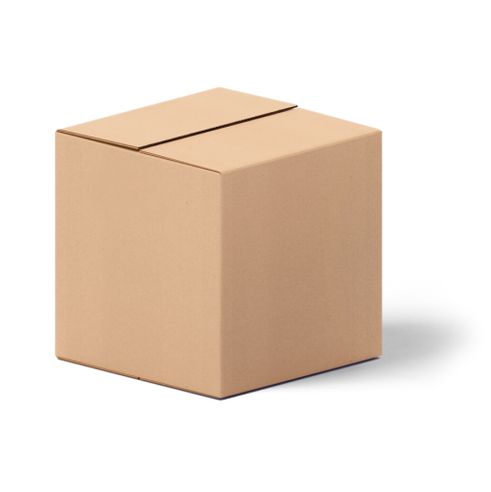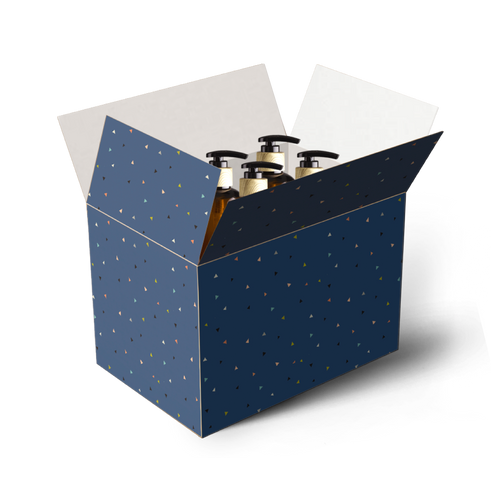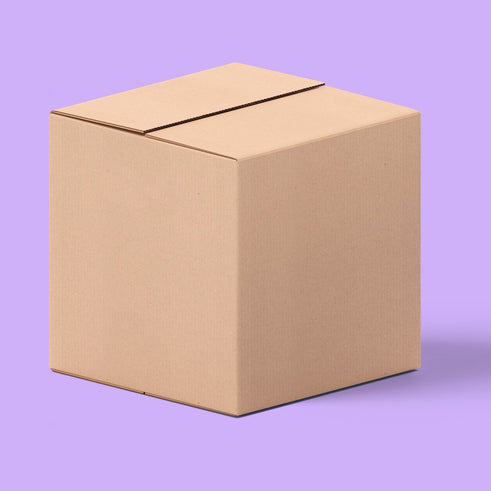Packaging 101: The Complete Guide
- Packaging 101
- Types of Packaging
- Aseptic Packaging
- Blister Packaging
- Biodegradable Packaging
- Bulk Packaging
- Carbon Neutral Packaging
- Circular Packaging
- Clamshell Packaging
- Compostable Packaging
- Cornstarch Packaging
- Corrugated Packaging
- Discreet Packaging
- Ecommerce Packaging
- Flexible Packaging
- Frustration Free Packaging
- Retail Packaging
- Secondary Packaging
- Smart Packaging
- Sustainable Packaging
- What is a PR Package?
- What is a Poly Mailer?
- Packaging Design Ideas
- AI Packaging Design
- Bakery Packaging Ideas
- Bath Bomb Packaging Ideas
- Bath Salt Packaging Ideas
- Body Butter Packaging Ideas
- Body Oil Packaging Ideas
- Body Scrub Packaging Ideas
- Brownie Packaging Ideas
- Cake Packaging Ideas
- Cake Pop Packaging Ideas
- Candle Packaging Ideas
- Candy Packaging Ideas
- Canva Packaging Design
- Chocolate Packaging Ideas
- Cinnamon Roll Packaging Ideas
- Clothing Packaging Ideas
- Coaster Packaging Ideas
- Coffee Bag Design Ideas
- Cookie Packaging Ideas
- Cosmetics Packaging Design
- Cotton Candy Packaging Ideas
- Cupcake Packaging Ideas
- DIY Packaging Ideas
- Dog Treat Packaging Ideas
- Food Packaging Ideas
- Empanada Packaging Ideas
- Etsy Packaging Ideas
- French Fries Packaging Ideas
- Frozen Food Packaging Ideas
- Hair Extension Packaging Ideas
- Handbag Packaging Ideas
- Jewelry Packaging Ideas
- Keychain Packaging Ideas
- Lash Packaging Ideas
- Lip Gloss Packaging Ideas
- Macaron Packaging Ideas
- Minimalist Packaging Ideas
- Mug Packaging Ideas
- New Employee Welcome Kit Ideas
- Packaging Colors
- Packaging Inserts Ideas
- Packaging Logo Design
- Packaging Typography
- Perfume Box Design Ideas
- Pizza Box Design Ideas
- Popcorn Packaging Ideas
- Scarf Packaging Ideas
- Skincare Packaging Design Ideas
- Soap Packaging Ideas
- Sock Packaging Ideas
- Sticker Packaging Ideas
- Sunglass Packaging Ideas
- Sustainable Packaging Ideas
- Tea Packaging Ideas
- Wax Melt Packaging Ideas
- Weed Packaging Ideas
- T-Shirt Packaging Ideas
- Wine Packaging Design Ideas
- What is a Packaging Engineer?
- Types of Packaging Materials
- Chipboard vs Cardboard
- Compostable Packaging Materials
- Alternatives to Plastic Packaging
- Edible Packaging Materials
- Food Packaging Materials
- Are Poly Mailers Recyclable?
- How to Recycle Cardboard Boxes
- How to Recycle Packaging Materials
- Medical Device Packaging Materials
- Mono Material Packaging
- Pharmaceutical Packaging Materials
- Plastic Food Packaging
- Protective Packaging Materials
- Reusing Packaging Materials
- Types of Packaging Foam
- Void Fill Packaging
- What is Chipboard?
- What is Kraft Paper?
- Offset vs Digital Printing
- RGB vs CMYK Printing
- Screen Printing vs Digital Printing
- Screen Printing vs Sublimation
- What is a Dieline in Packaging?
- What is Die Cutting?
- What is Digital Printing?
- What is Flexographic Printing?
- What is Glassine Paper?
- What is Offset Printing?
- What is Spot UV Printing?
- Why is 300 DPI Good for Printing?
- How to Estimate Shipping Costs
- How to Pack Glass for Shipping
- How to Mail a Bubble Mailer
- How to Make a Shipping Label
- How To Measure Box Dimensions and Sizes
- How to Ship Alcohol
- How to Ship Artwork
- How to Ship Books
- How to Ship a Cake
- How to Ship Candles
- How to Ship Chocolate
- How to Ship Clothes
- How to Ship Cookies
- How to Ship Food
- How to Ship a Hat
- How to Ship Jewelry
- How to Ship a Laptop
- How to Ship Perfume
- How to Ship a PC
- How to Ship Perishable Food
- How to Ship Plants
- How to Ship Shoes
- How to Ship Vinyl Records
- Packaging Symbols
- Shipping Large Items
- What is a Delivery Exception?
- What is Shipping Insurance?

Discover Phillip Akhzar’s journey, the Founder and CEO of Arka, bringing 16 years of expertise in packaging and supply chain logistics. Read more on Arka.
The Importance of Proper Jewelry Shipping
Jewelry faces unique challenges during shipping that other products don't encounter. Small pieces can easily get lost in packaging or fall out of poorly sealed containers. Delicate chains can tangle into impossible knots, while gemstones might come loose from their settings if jostled around too much.
Then there's the theft factor. Packages that obviously contain jewelry become targets for opportunistic thieves. Even something as simple as using jewelry-branded packaging on the outside of your shipment can signal to potential thieves that there's something valuable inside.
Regular shipping methods that work fine for books or clothing just don't cut it for jewelry. You need specialized techniques that account for the unique properties of metals, gemstones, and delicate construction. This means using specific materials, following particular packing sequences, and choosing carriers that understand the value of what they're handling.
Preparing Jewelry for Shipment: Easy Steps
Before any jewelry goes into a box, you need to make sure it's ready for its trip. This preparation phase is to make sure you use the safest way to ship jewelry; it can make the difference between a piece arriving in pristine condition or needing to be returned.
Cleaning and Inspecting Your Jewelry Before Shipping
Start by giving each piece a thorough cleaning using appropriate methods for the specific metals and stones involved. A clean piece not only looks better when it arrives but also allows you to spot any existing damage that might worsen during shipping.
Check every clasp, prong, and connection point. Look for loose stones, weak links in chains, or any signs of wear that could lead to breakage during transit. If you find issues, fix them before shipping, it's much easier to address problems in your workshop than to deal with damaged goods and unhappy customers later.
Documenting Items: Photos and Appraisals
Take clear, detailed photos of each piece from multiple angles before packaging. These photos serve several purposes: they provide documentation for insurance claims if needed, help resolve any disputes about the condition of items upon arrival, and can be useful for your own records.
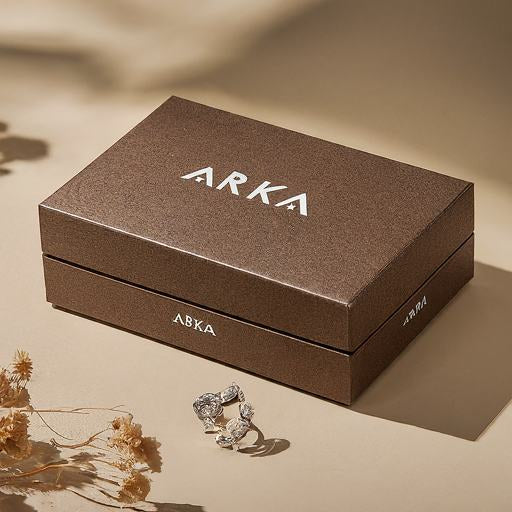
How to Package Jewelry for Shipping: 10 Expert Techniques
Now comes the part where your jewelry gets wrapped up for its big adventure. Each step in this process builds on the previous one to create multiple layers of protection.
Choose the Right Box Size for Each Item
Size matters when it comes to custom jewelry boxes. Too big, and your pieces will rattle around like dice in a cup. Too small, and you'll struggle to add adequate padding. The sweet spot is a box that gives you enough room for proper cushioning while keeping everything snug and secure.
For rings, small square boxes work well. Necklaces need longer, flatter boxes that prevent tangling. Earrings do best in compact boxes that keep pairs together. If you're shipping multiple pieces, consider whether they should go in one larger box or separate smaller ones based on their individual protection needs.
Use Anti-Tarnish and Scratch-Resistant Wraps
This is where the magic happens for protecting your jewelry's finish. Anti-tarnish bags or cloths create a barrier against the moisture and gases that cause silver to tarnish during shipping. These specialized packaging materials are worth the investment, especially for silver pieces or items with silver components.
For pieces with gemstones or delicate surfaces, soft cloths or custom tissue paper provide the first layer of protection against scratches. Avoid using newspaper or rough materials that might leave marks or transfer ink onto your jewelry.

Separate and Cushion Each Piece Individually
Never let jewelry pieces touch each other during shipping. Even pieces made from the same metal can scratch each other if they rub together during transit. Wrap each item individually, and if you're shipping multiple pieces, make sure they're separated by adequate padding.
For necklaces and bracelets, lay them flat and secure them to prevent tangling. You can tape the ends to a piece of cardboard or use specialized jewelry cards that keep chains organized and tangle-free.
Add a Layer of Padding at the Bottom of the Box
Before placing any jewelry in your custom shipping box, create a cushioned foundation. Bubble wrap, foam padding, or even crumpled tissue paper works well for this base layer. This padding absorbs shock from drops or impacts and prevents your jewelry from hitting the hard bottom of the custom box.
Place Jewelry in a Small Inner Box or Pouch
Think of this as creating a box within a box. Place your wrapped jewelry in a small inner container, this could be a jewelry box, a padded pouch, or even a small cardboard box. This inner container serves as the first line of defense and helps organize multiple pieces.
Velvet pouches work particularly well for this purpose because they're soft, attractive, and add to the premium unboxing experience. Plus, customers often keep these pouches for storing their jewelry later.
Double-Box for Extra Protection
If you wonder how to ship expensive jewelry, you should know that double-boxing provides an extra layer of security for valuable or particularly delicate pieces. Place your inner box (with the jewelry) inside a big shipping box with additional padding around all sides. This technique is especially important for pieces worth more than a few hundred dollars.
Fill All Empty Space to Prevent Movement
Fill every gap with appropriate padding material, bubble wrap, packing peanuts, or air pillows all work well. The goal is to create custom packaging where nothing moves when you shake it gently. If you can hear or feel items shifting around, add more padding until everything stays put.
Seal the Box Securely with High-Quality Tape
Use strong custom packing tape and apply it generously along all seams and edges. Pay special attention to the bottom of the box, this is where most packages fail during shipping.
Create an "H" pattern with your tape on both the top and bottom of the box, running strips along the center seam and across the edges. This technique distributes stress and prevents the box from splitting open.

Label Discreetly to Avoid Theft Risk
Here's where many jewelry shippers make a critical mistake. Never use packaging or labels that advertise what's inside. Avoid jewelry store boxes or return addresses that obviously indicate jewelry contents.
Use plain boxes and generic return address labels. If you must include your business name, choose something that doesn't immediately scream "jewelry" to potential thieves. The goal is to make your package look as ordinary and uninteresting as possible from the outside.
Include a Packing Slip or Care Instructions Inside
Add value to your customer's experience by including helpful information with their purchase. A packing slip helps them verify their order, while care instructions show that you stand behind your products and want them to last.
Consider including information about proper storage, cleaning methods, and when to seek professional maintenance. This extra touch demonstrates professionalism and helps prevent future problems that could lead to returns or complaints.
How to Select the Right Carrier for Shipping Jewelry
Choosing the right shipping carrier can make or break your jewelry shipping strategy. Each major carrier has different strengths, limitations, and policies when it comes to valuable items. Let’s explore how to ship jewelry with different carriers:
Shipping Jewelry with USPS
USPS remains the budget-friendly favorite for many independent jewelers—especially on lighter parcels.
- Built-in insurance. Priority Mail now includes up to $100 of insurance for both retail and commercial customers. (Some older brochures still list $50 for retail, so double-check you’re quoting the current amount.)
- Extra coverage. You can buy additional insurance up to $5,000 per shipment.
- Security option. For maximum protection, USPS offers Registered Mail, which logs every hand-off in a sealed, tamper-evident pouch. Expect longer transit times and higher fees, but also the strongest chain of custody USPS provides.
-
When it makes sense. For everyday pieces under roughly $1,000 declared value, Priority Mail balances cost and coverage well. Above that range, many merchants switch to FedEx or UPS for faster scans and fewer handling concerns.
Shipping Jewelry with FedEx
FedEx is the go-to carrier when you need detailed tracking and tight delivery windows.
- Excellent visibility. Their scan network offers near-real-time updates, which is reassuring when customers refresh tracking links hourly.
- Standard limits. By default, jewelry is capped at $1,000 declared value.
- High-value option. Enrolled shippers can access FedEx’s Declared Value Advantage (High-Value Jewelry) Program, allowing declarations up to $100,000 on U.S. domestic shipments (and $25,000 to select international destinations). Eligibility requires an application and additional safeguards, but it unlocks coverage levels well above competing services.
- How much does it cost to ship jewelry? Expect higher base rates than USPS on small parcels, but many jewelers view the granular tracking and reliability as worth the premium—particularly for pieces over $1 k.
Shipping Jewelry with UPS
UPS positions itself between USPS and FedEx on speed and price, with a few unique rules jewelers must note.
- Automatic coverage. Every UPS package comes with $100 of liability protection.
- Higher declarations. If you ship from a UPS account or a UPS Store location, you can declare values up to $50,000 for jewelry.
- Drop-box limits. Packages left in UPS drop boxes are limited to $500 declared value, so always tender high-value pieces at a staffed counter.
- International cap. UPS restricts the declared value of jewelry headed overseas to $500, which is a deal-breaker for many cross-border sellers.
- Tracking reputation. Scan density is comparable to FedEx, making UPS a solid domestic choice when you need more than USPS offers but don’t require FedEx’s specialty program.
How to Ship Jewelry Internationally
Cross-border shipments introduce new variables—customs clearance, duties, and tighter insurance rules.
-
Research destination regulations. Some countries restrict precious-metal imports or require hallmark certificates and gemstone disclosures.
-
Prepare spotless paperwork. Incomplete or inaccurate customs forms trigger delays, extra fees, or confiscation. Detail metal content, stone types, and retail value clearly.
-
Budget for duties and taxes. Decide upfront whether you or the recipient will pay import fees, and communicate that policy to customers.
-
Consider a customs broker. For high-value parcels or complicated destinations, a broker’s fee is usually far cheaper than a shipment stuck in limbo.
-
Choose the right service. USPS Priority Mail International is economical for items under the $500 UPS cap, while FedEx and UPS offer premium express routes with dedicated brokerage services for higher-value pieces.
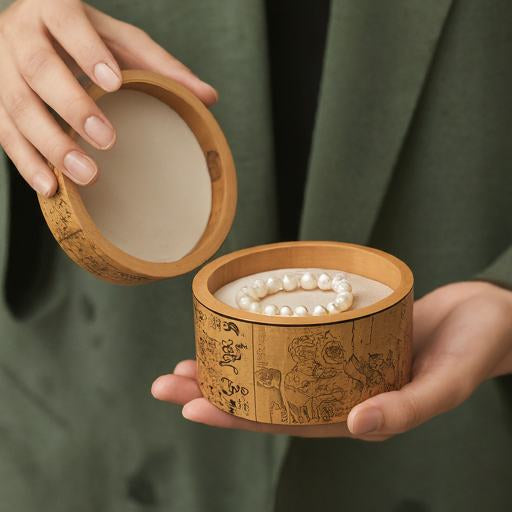
Jewelry Shipping Insurance and Legal Considerations
Insurance and tracking aren't just nice-to-have features, they're essential components of professional jewelry shipping that protect both you and your customers.
Evaluating Insurance Needs for Jewelry Shipments
The basic coverage provided by shipping carriers rarely covers the full value of quality jewelry. USPS includes $100, while FedEx and UPS provide similar minimal coverage. For anything worth more than these basic amounts, you need additional protection.
Calculate your insurance needs based on the replacement cost of items, not just their wholesale cost. Remember that if a piece is lost or damaged, you'll need to cover the full retail value to make your customer whole.
Legal and Regulatory Considerations
Different states and countries have varying regulations about jewelry sales and shipping. Some require specific disclosures about metal content, gemstone treatments, or country of origin. Make sure you understand the requirements for both your location and your customers' locations.
Keep detailed records of all shipments, including photos, appraisals, and insurance documentation. These records can be crucial if legal disputes arise or if you need to file insurance claims. Many jurisdictions require businesses to maintain shipping records for several years.
Handling Returns and Exchanges
Establish clear return policies that specify time limits, condition requirements, and who pays for return shipping. Make sure customers understand these policies before they purchase, and include them with shipped items.
For return shipments, provide customers with the same level of packaging guidance you use for outbound shipments. Consider providing return packaging materials for high-value items to ensure they come back to you safely.
Final Thoughts
Learning how to ship jewelry successfully combines technical knowledge, attention to detail, and genuine care for your customers' experience. Every step in the process, from initial preparation through final delivery, contributes to the overall success of your jewelry business.
As your jewelry business grows, regularly review and update your shipping procedures. What works for a few packages a week might need adjustment when you're shipping dozens or hundreds of pieces monthly. Stay informed about new packaging materials, shipping options, and industry best practices to keep your shipping game strong.
